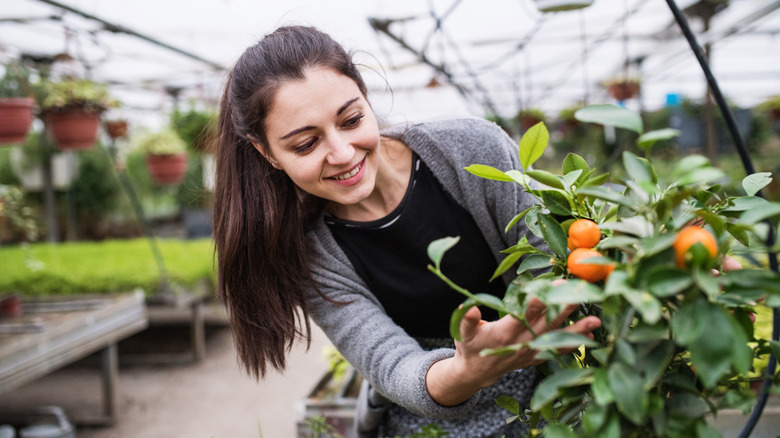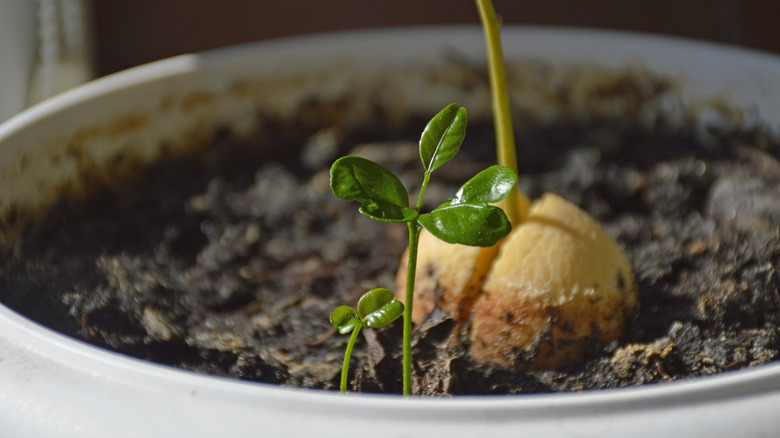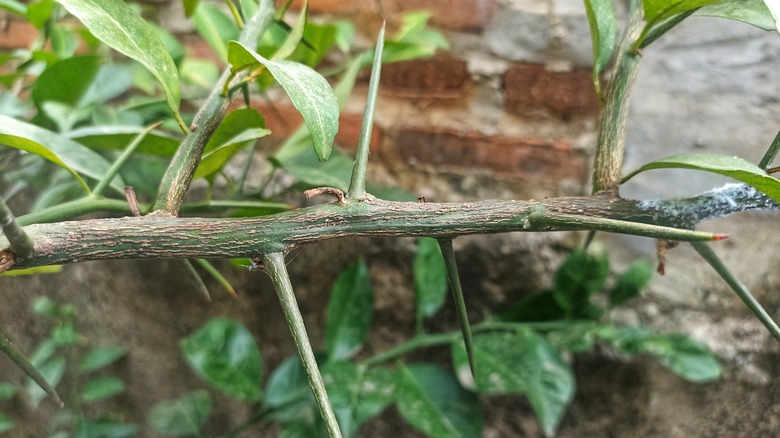Can You Grow A Fruiting Tree From A Whole Orange? House Digest's Gardening Experts Weigh In
You received some oranges in your CSA box, and they're delicious. As you lament that you only have one piece of fruit left, you think, "If I grew this orange into a tree, I'd have a steady supply." Genius! Plant an orange — a whole orange and not just the seeds — in a container of potting mix or even straight into a garden bed, and you might end up with a citrus tree. Notice we said might? That's because this idea, while viable in principle, comes with some caveats well above standard advice on how to grow and care for an orange tree. House Digest's master gardener Tiffany Selvey and professional gardener Peg Aloi say it's not worth the effort. As Selvey remarks, "It's possible, I suppose, but I don't think anyone would recommend it."
An important fact to consider is that any seedlings you get from growing an entire orange likely won't produce similar fruit. "One problem with growing any tree from store-bought fruit is that most of those fruits are from grafted trees," Selvey explains. "This means the fruit from the parent tree won't be the same since it will have qualities of the rootstock and the grafted tree." Aloi echos her advice, saying "Most commercial orange growers (as well as other fruit tree growers) work almost exclusively with grafted stock. Citrus trees can be grown from cuttings but not from seeds."
The rotten truth
Tiffany Selvey also shares that some fruit trees, especially citrus, are bred to have sterile seeds. Citrus trees, particularly sweet oranges, also have a few quirks. For instance, some trees produce seeds through apomixis, a kind of natural cloning process, rather than pollination. This ensures that any offspring are an exact copy of the parent plant, but there's no way to know if the orange you picked up in the supermarket is the progeny of such a tree.
Let's consider what happens when you bury an entire orange in the ground or a planter of soil. First, the skin and flesh of the orange will start to decompose. Slowly, the seeds will be freed from their zesty casing and (potentially) germinate. The spoiled citrus may even feed any resulting seedlings. Rotten fruit is a natural fertilizer, after all. Whether you have the patience for this method is another story altogether. Some sources state orange peels take anywhere from six months to two years to biodegrade — and that's in the wild, exposed to the elements and all manner of critters.
You might get lucky and end up with an orange prone to vivipary, a technical term referring to the premature sprouting of seeds inside a piece of fruit. Like certain other angiosperms (flower-and-fruit-producing plants), citrus species are prone to this trait. But again, you'll run into the aforementioned issue: The resulting seedling is unlikely to produce good fruit.
It's simply not worth it
If you've read this far and still want to try growing a tree from a whole orange, consider first how long you'll have to wait to see if the orange you planted produces fruit true to the original. The answer: A long, long time. Citrus trees grown from seed can take up to 14 years to fruit, according to a NAFEX hardy citrus consultant replying to a UBC Botanical Garden forum query. Conversely, grafted trees fruit in one to three years.
There are a few other downsides to trying this method, too. The taste of a seed-grown orange is often lackluster, even if the plant ends up being the same variety as its parent. Though your whole orange-grown tree might withstand the cold better than its grafted or cutting-cultivated counterpart, it'll probably be less disease-resistant and is also more likely to be covered in thorns.
The conclusion? "It would be okay for an experiment but not something to do if you want edible oranges," says Tiffany Selvey. In other words, give this project a go if you have the time, space, patience, and curiosity. If not, save yourself the bother — head to the nursery and pick up a grafted sapling or learn how to make a bird feeder out of an orange instead.


